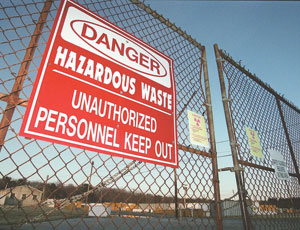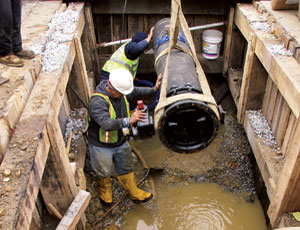As American Recovery and Reinvestment Act (ARRA) dollars begin to roll out from the Environmental Protection Agency, states are scrambling to develop and implement their plans to distribute the funds to local communities and utilities. In some cases, money has already been distributed; in others, the agencies responsible for distribution are waiting for EPA to work out the details of how the money will be allocated.


But while funding may be merely a trickle now, agency and industry sources say that when the flood of dollars eventually arrives, it will buoy cash-strapped communities, creating jobs and advancing projects that were previously stalled.
Rebecca West, director of technical services at Spartanburg Water, in Spartanburg, S.C., says the funding “clearly is going to jump-start some projects that couldn’t get started before.”
Werner Mueller, senior vice president at Omaha-based HDR, says, “Because so many agencies were already cash-strapped…they are…taking projects that they weren’t able to fund, and now they are able to move them into construction.”
Turning On the Spigot
EPA awarded the first of its ARRA funds for drinking water and wastewater projects in early April. Clean Water state revolving funds were distributed to New York, Kentucky, West Virginia, North Carolina and Nebraska. Drinking-water SRF funds were awarded to Kansas and Nebraska.
New York will receive the largest amount in the nation. On April 3, EPA announced that it had awarded $430 million to the state of New York for wastewater infrastructure projects, the largest single grant in the agency’s history. The state’s drinking-water SRF will receive $86.8 million. Other big beneficiaries include California and Texas.
First priority will go to shovel-ready projects that have either been designed and are under contract already or which will be able to move to the construction phase within the next few months. ARRA stipulates that projects must be under construction by February 2010, a year from the date of the signing of the bill into law, with priority given to projects ready to move forward within 120 days.
Many state agencies report that they are using existing processes and formulas to award stimulus grants.
Alaska’s Dept. of Environmental Conservation will receive $43 million for drinking-water and wastewater projects. Bill Griffith, facilities program manager, says that ADEC is following its usual SRF award process, but its placing more weight on projects that will be ready to move to construction with speed. “We’re working closely with EPA and communities to identify project needs and get this money out into projects quickly,” he says.
The stimulus funds in Alaska will be awarded in two phases, with the first grants going to projects ready to be under contract and ready to start construction by this summer. Local communities will then use the remaining funds for projects ready to start construction by the beginning of next year.
The new law provides states with additional flexibility in loan terms: At least 50% of new funding must comprise subsidies such as principal forgiveness or negative interest rates. Griffith says the principal-forgiveness provisions of the ARRA will enable some poorer communities in Alaska to undertake long overdue but sorely needed infrastructure projects. But communities that do not meet the criteria for principal forgiveness may opt not to take any stimulus funds and simply apply for annual SRF grants, he notes.
In Washington, D.C., the Washington Water and Sewer Authority (WASA) will receive funds directly from EPA. Some $19 million will go for clean-water projects, and another $19 million will go for drinking-water projects. Projects...




Post a comment to this article
Report Abusive Comment